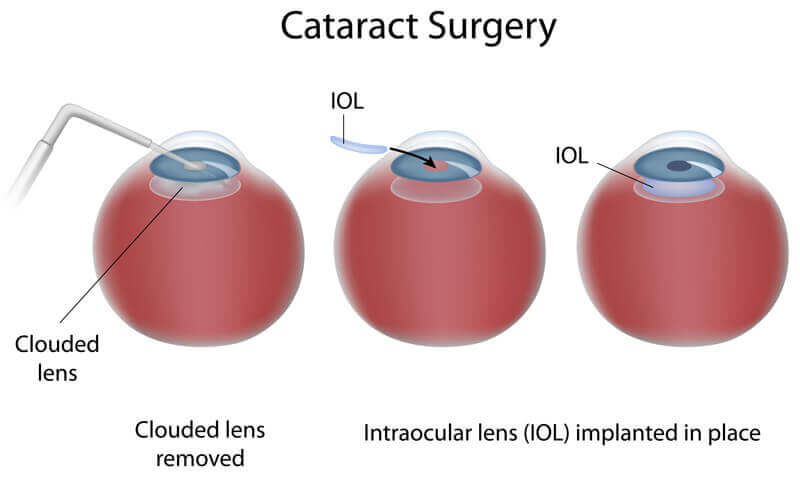Cataract surgery is now done on an outpatient basis and typically only requires a two-three-hour stay. Typically, the surgery takes between ten to twenty minutes and is painless.
During surgery, most anxiety is relieved with a mild sedative. Using ultrasound, the cataract is removed with a very small incision made in a bloodless area of the eye.
Insertion of the foldable lens implant is accomplished through the same small incision as before. In this case, the lens is implanted behind the pupil, where there was a cataract. As a result, the wound is secure and seals itself on its own.
For the first day, a seal is applied to the eye, and then a shield is to be worn at night. It is possible to resume regular activities as soon as possible. After surgery, patients are given eyedrops every day for a month to reduce infection risk and speed healing.
Even if you have a successful surgery, there is still a risk of vision problems. Generally, there is a 4-5% chance of complications occurring. Hence, 95% of patients report some (or significant) improvement in their vision.

Following surgery, some eye doctors advise you not to lift heavy objects or engage in strenuous activity for three to four weeks. The majority of eye doctors do not restrict your movement in any way, except maybe not to swim for a few days. You will have to wait a few weeks to determine exactly which glasses will work best to supplement your distance vision and/or reading vision, but you will be able to function virtually as normal during that time.
Are you wondering if you might be a good candidate for cataract surgery? Take our FREE cataract surgery Self-Test, and one of our eye doctors will be in touch with you!
Take our FREE cataract surgery Self-Test, and one of our eye doctors will be in touch with you!
LEARN MORE